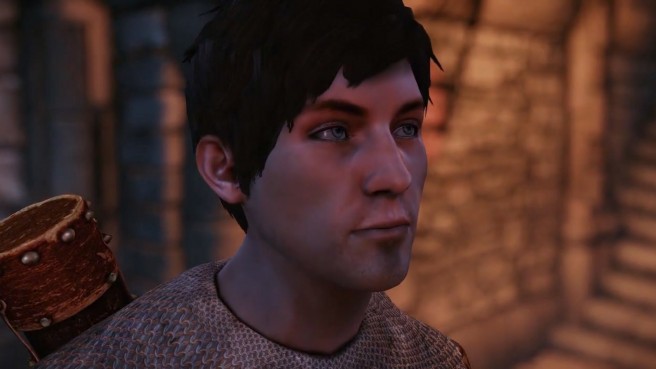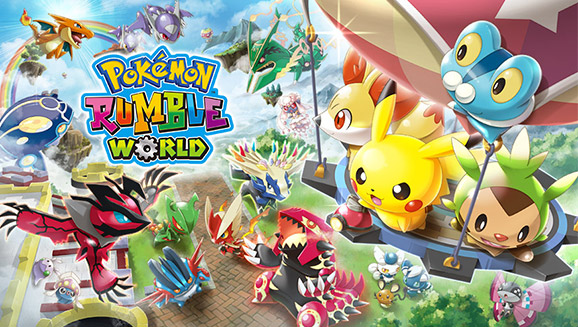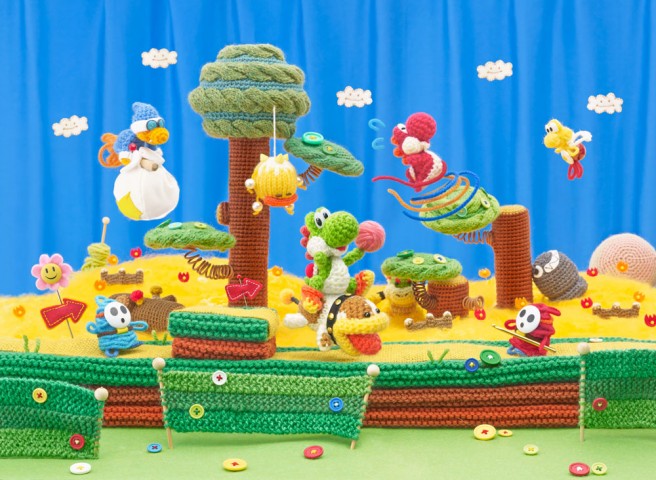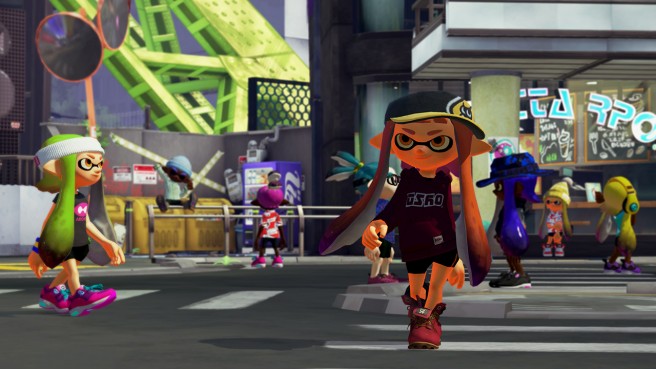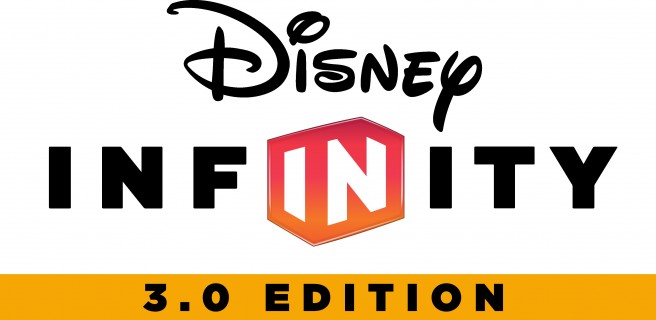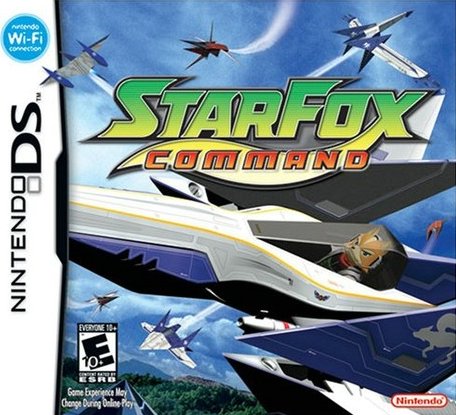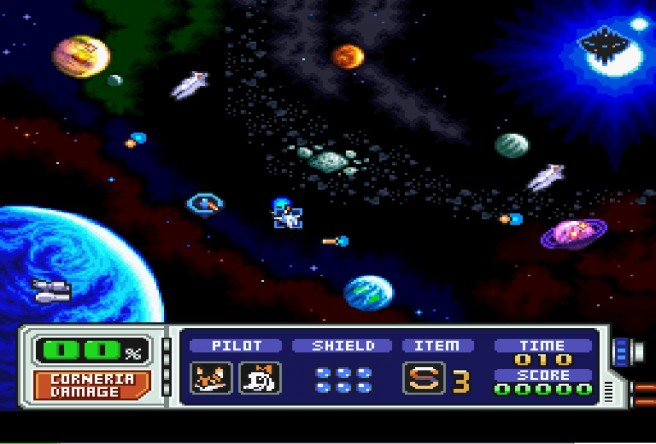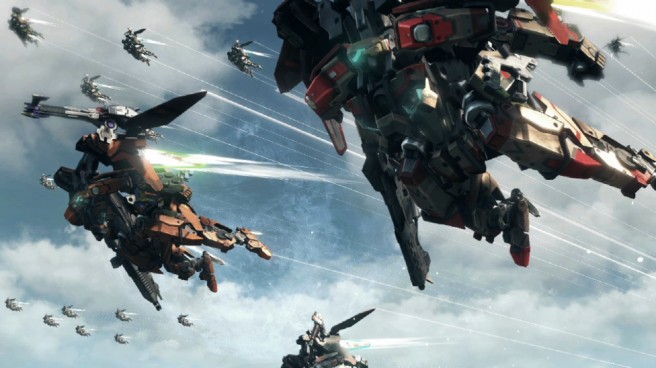Shadow of the Eternals still in the works, team has “big plans for the future”
Posted on 10 years ago by Brian(@NE_Brian) in News, Wii U eShop | 24 Comments
Shadow of the Eternals is a new passion project from Eternal Darkness creator Denis Dyack. Dyack, along with the rest of his team, hoped to achieve funding via Kickstarter. Two campaigns launched in 2013, but both unfortunately failed to reach their funding goals.
We last heard about Shadow of the Eternals last October. The project is now in development at Quantum Entanglement Entertainment Inc., which was founded by Dyack. Other than that, things have been pretty quiet
However, Dyack once again commented on Shadow of the Eternals while speaking with Niche Gamer. When asked about its funding status, he stated:
Well, we can’t talk about that right now. But there will be announcements in the future. The bottom line is we’re really excited on where we’re going, things are very quiet, and probably will continue to be quiet but they’re going well. Please stay tuned, and we’ll update everyone as soon as we can. I wish I could say more, but you know the drill with the industry, right?
Additionally, when asked if a potential re-reveal is planned, and whether we’ll see the game soon, Dyack said:
Well, it all depends on what your definition of soon is. [laughs]
Rather than tease, I would just say that we believe in the project and we’re doing everything we can to see this project – and other projects – some of which are really great as well, get out there. We’ve got some big plans for the future, and we’re being very aggressive on some things, and we’re really looking forward to see how things roll out.
More: Denis Dyack, interview, Shadow of the Eternals, top
Ambrella on why Pokemon Rumble World is free-to-play, considered automatic movement, more
Posted on 10 years ago by Brian(@NE_Brian) in 3DS eShop, News | 3 Comments
In Famitsu’s most recent issue, the magazine caught up with Ambrella director Norio Matsumura and president Muneaki Ozawa. The two sides chatted all about the free-to-play 3DS game Pokemon Rumble World.
One of the most notable questions Famitsu asks is why the team decided to try out the F2P model. Matsumura noted that it actually happened thanks to a suggestion from Pokemon president Tsunekazu Ishihara.
Matsumura said:
Mr. Ishihara (the president of the Pokemon Company) suggested: “Let’s try out F2P.” Personally I think that refreshing controls and the nature of continuously returning to the game are concepts which suit free games very well, so I thought there was a chance of success. However, many members of the staff are against F2P games…
Matsumura continued on his comments by talking about how development didn’t progress without some resistance:
Yoshi’s Woolly World devs on the graphics, made real items with wool for testing
Posted on 10 years ago by Brian(@NE_Brian) in News, Wii U | 13 Comments
This month’s issue of EDGE has a short interview with the developers behind Yoshi’s Woolly World. The magazine spoke with Nintendo producer Takashi Tezuka as well as executive producer Etsunobu Ebisu from Good-Feel. Given the unique style featured in Yoshi’s Woolly World, the discussion focused on the game’s visuals.
Tezuka first spoke about Yoshi’s Woolly World’s art style in general:
We’ve always felt that Yoshi deserves to have a handcrafted feel to the graphics, and we’ve strived to bring this into games like Yoshi’s Island and Yoshi’s Story. With those previous titles, it was just that – an aesthetic – and didn’t really have much influence on the gameplay itself.
Tezuka also specifically explained the decision to use wool in the title, and how the graphics impact the gameplay:
More: Good Feel, interview, top, Yoshi's Woolly World
Splatoon’s UK marketing campaign on the same level as Mario Kart 8
Posted on 10 years ago by Brian(@NE_Brian) in News, Wii U | 10 Comments
Nintendo has a rather substantial marketing campaign lined for Splatoon in the UK. Marketing manager Chandra Nair, speaking with MCV, mentioned that it will be on the same level as Mario Kart 8.
According to Nair:
We have a substantial campaign planned for Splatoon. To give you an idea of the scale, we’re matching Mario Kart 8 – that’s the potential we think Splatoon has. We have the utmost confidence in the potential of Splatoon. It gives retailers a fantastic art style that stands out in-store or on-screen and it also offers various up-sell opportunities with the accompanying Amiibo. It’s a really interesting game for us because it allows us to expand out to a group of people who may never have considered Wii U before.
Thus far, Nintendo has already been involved with digital billboards, cinema ads during Tomorrowland and Mad Max, a sponsorship of Cartoon Network, and a digital campaign that started in April. That’s on top of a Splatoon-themed skatepark in Corby which opened last month.
More: Chandra Nair, interview, Splatoon, UK
Video: “Harnessing The Disney Empire For Disney Infinity 3.0”
Posted on 10 years ago by Brian(@NE_Brian) in Videos, Wii U | 0 comments
Game Informer published an extensive interview with John Vignocchi from Disney Interactive. In addition to talk about the company’s gaming approach within Disney, he also touches on how things are managed to fuel the Infinity brand. Check out the interview below.
Star Fox Command’s initial prototype was “very much like the original Star Fox”
Posted on 10 years ago by Brian(@NE_Brian) in DS, News | 1 Comment
Star Fox Command could have ended up as a very different game. Initially, the plan was to make it “very much like the original Star Fox,” according to developer Dylan Cuthbert.
So what happened? Cuthbert recently stated that Shigeru Miyamoto “specifically told us to take the game in the direction of Star Fox 2”. He wanted the game “to be more experimental” and to use the “DS’ tow screens in as interesting a way as possible.”
Cuthbert’s comments in full:
The initial prototype we made was very much like the original Star Fox, but Miyamoto specifically told us to take the game in the direction of Star Fox 2 and I was happy to explore those more strategic themes. Miyamoto told us to be more experimental, using the DS’ two screens in as interesting a way as possible. Takaya Imamura was stationed in our office permanently during development and created the story lines and other character-based parts to the game.
More: Dylan Cuthbert, interview, Star Fox Command
Completed version of Star Fox 2 exists
Posted on 10 years ago by Brian(@NE_Brian) in General Nintendo, News | 6 Comments
According to Q-Games boss Dylan Cuthbert, who worked on the original SNES title, Star Fox Command, and Star Fox 64 for 3DS, a finished version of Star Fox 2 exists.
In an interview with Nintendo Life, Cuthbert mentioned that he was able to play the game during the development of Star Fox Command.
Even after the decision was made we went ahead and completed it, taking it to be fully QA’d through Mario Club. During development [of Star Fox Command] we received a copy of the mastered Star Fox 2 ROM to play, and it was quite a blast.
Cuthbert also noted that ROM images found on the Internet are unfinished prototypes, as they are missing elements that make it complete. Unfortunately, it sounds like we probably won’t ever see what the finished version looks like.
The legal problems regarding the now-defunct Argonaut Software are probably a nightmare. Never say never though! The fully complete Japanese ROM at least does exist.
More: Dylan Cuthbert, interview, Star Fox 2
Rodea: The Sky Soldier – interview with the game’s creator and director
Posted on 10 years ago by Brian(@NE_Brian) in 3DS, Videos, Wii U | 2 Comments
NIS America uploaded a new video interview for Rodea: The Sky Soldier with creator Yuji Naka and director Zin Hasegawa. Watch it below.
Xenoblade Chronicles X executive director on the game’s Skells
Posted on 10 years ago by Brian(@NE_Brian) in News, Wii U | 6 Comments
The most recent issue of Famitsu has an interview with Tetsuya Takahashi, the executive director for Xenoblade Chronicles X. One of the topics the magazine touched on regularly was the Skells – otherwise known as Dolls.
Regarding what Monolith Soft ordered from Skell designer Takayuki Yanase, Takahashi said: “We ordered frame structures that are easy to design, easy for us to create and easy to turn into 3D.”
Bear Box talks StarLight, says UHost is now targeted for Q4 2015
Posted on 10 years ago by Brian(@NE_Brian) in News, Wii U eShop | 0 comments
Bear Box Media has a couple of new Wii U eShop games in the works. The first is StarLight, which was revealed at the end of April.
Bear Box shared an update on the project with Pure Nintendo, with the studio’s Andy Ford stating:
Although designed to be addictive… StarLight is hard… very hard. It’s composed of 75 standard levels, 5 secret levels, and 3 modes to choose from. Pure, Easier, and Hardcore. Pure is the way the game was designed to be played. It’s all about reactions and timing. Once players complete Pure Mode, they unlock Mirror mode. Each level has been carefully designed to create an entirely different puzzle both forwards and backwards, so in this mode you effectively have 150 levels to work your way through.StarLight gameplay 2There’s no mirror mode for easier players. Hardcore is the tough one. As soon as a player collides with a single barrier, they must start all over again… from the very beginning. It’s a pretty big challenge, so we felt it deserved a worthwhile reward. We’ll be running a competition from the game’s launch stating that the first player to post an image of the final screen of Hardcore mode on Miiverse will win $100 worth of eShop vouchers. The highest I’ve personally been able to get in this mode is level 56… So it’ll be interesting to see who manages it first.
You may recall that along with StarLight, Bear Box is also working on UHost. The original plan was to have it out towards the end of last year, but the team is now targeting Q4 2015.
Here’s the latest from Ford:
Regarding UHost, our original plan was to release the game in Q4 of 2014 at a low price, and then increase the price each time an update was created, bringing in new content. This would have been great, but unfortunately we missed our window. It was then decided that the additional content would be added to the game, aiming for a release this year, Q4. It’s given us time to add in some great new mini-games, even more questions, and a lot of extra polish.
